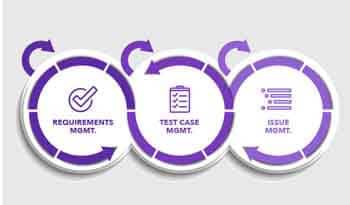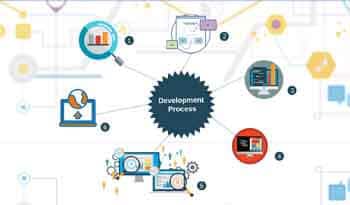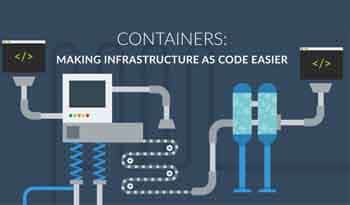
A complete guide to Agile Application Lifecycle Management
What Is Agile Application Lifecycle Management (ALM)?
Agile Application Lifecycle Management (ALM) contacts each period of the item lifecycle of a product application. ALM assists organizations with bettering the use of endeavor Information Technology (IT) and programming improvement assets. With ALM, you can undoubtedly create, test, discharge, and keep up market-driving programming applications.
Agile Application Lifecycle Management is the demonstration of using Agile cycles to manage your necessities, issues, and tests. There are a ton of reasons why improvement bunches complete Agile to manage their assignment lifecycles.
The Uses of Application Lifecycle Management
What does Agile Application Lifecycle Management do? Here is a portion of the things it can accomplish for you and the undertaking:
Arrange, synchronizes, and organize the lifecycle exercises for creating or changing programming applications:
- Prerequisites
- Improvement
- Coding
- Quality Assurance
- Delivery and Deployment
- Programming upkeep
- Record and track work process and fulfillment
Similarly, as with any cycle, there are time tested prescribed procedures that smooth reception and the Agile Application Lifecycle Management is no exemption. Nonetheless, the convergence of Agile and ALM implies that DevOps groups must consider application improvement and organization from an alternate perspective, one that enlightens how application emphases fit into business measures that are changing at an ever quicker pace.
Numerous Agile Application Lifecycle Management practices:
Some numerous merchants and associations give formats and directions to building DevOps into an Agile Agile Application Lifecycle Management, in any case, there is nobody size-fits-all, and various activities may require various philosophies. Everything comes down to clinging to some fundamental direction and choosing what works best.”
Various sellers have made administrations that give direction around actualizing the Agile Application Lifecycle Management. Those sellers group together preparing, formats, programming instruments, and different assets into a bundle that organizations can embrace.
a portion of those contributions ends up being a decent beginning stage, notwithstanding, most will find that customization is an absolute necessity and that can run into extreme costs while depending on outcasts to completely comprehend your business measures.”
Agile is about cycles, however, Application Lifecycle Management is about the instruments:
Because of that, it gets basic to pick the fitting instruments to help ALM.
Consolidate arranging instruments: ALM directly affects venture arranging, the data encompassing the means of an arrangement ought to be caught and investigated.
Join revealing and examination methods: Knowing the cycle and a superior comprehension of how things work in an Agile situation is basic for progress.
Influence Scoped Work Tools: Having apparatuses that know about venture scope ends up being a significant structure obstruct making ALM. Extensions frequently change and develop, so instruments must have the option to deal with the progressions with little object or muddle.
Join adaptation control: With this lifecycle, application emphases can happen rapidly and regularly change dependent on criticism and different contemplations. Part of the lifecycle of the executives is understanding where an application is in its lifecycle. Here it gets basic to follow cycles and relate those to forming rehearses.
Recall QA: Quality affirmation is regularly overlooked in this cycle, with many depending on emphasis input to completely approve the nature of any change pushed down the pike. Be that as it may, QA is a major piece of ALM, and ALM powers the presentation of better QA approaches. Incorporated apparatuses that approve and track QA tests are basic to ensuring the delivered code meets the least prerequisites.
Consolidate mechanization: Numerous instruments available can computerize a great part of the QA testing measure. Those instruments can test cycles a lot quicker than humanly conceivable and can be scripted to search for possibilities. RPA becomes possibly the most important factor here and by wrapping an RPA device with AI, testing can be additionally robotized, speeding the cycles and guaranteeing that Agile-driven timetables are met.
Group Involvement: Picking instruments for Agile Application Lifecycle Management ought to be a group cycle. As such, Agile colleagues ought to have a state in what apparatuses are utilized, how they are chosen, and what results are normal from the devices. That prompts the self-association of colleagues and assists with normalizing measures.
Establishment a Feedback System: One of the most perceived parts of it is the criticism circle, where cycles offer input that is utilized to improve future emphasis. With ALM, the input circle is similarly as imperative to forestall declining application quality and philosophical movements. Fusing input as a feature of ALM assists with forestalling those issues and brings ALM into the folds of Agile.
Ensure chosen apparatuses handle administration: Agile Application Lifecycle Management is the persistent cycle of dealing with the lifecycle of an application through administration, implying that the administration must be executed as needs are. That requires the board instruments that consolidate administration philosophies that line up with Agile, yet offer the fitting detailing and control of cycles.
For more information regarding the Agile Application Lifecycle Management, kindly contact us, for regular updates kindly follow us on Twitter and Facebook



